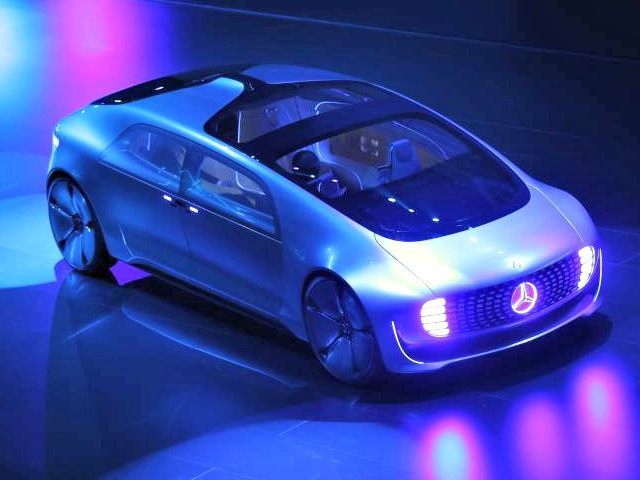Mercedes-Benz research and development lab in Sunnyvale, California is racing to beat Apple, Google and Uber to dominate commercial and luxury self-driving vehicles.
Google, Tesla, BMW, Mercedes-Benz, Honda, Volkswagen and four other developers of autonomous vehicles already have permission from the state of California to test autonomous vehicles on public roads. Most of those permits involve the 12-mile-stretch in the heart of Silicon Valley between Santa Clara to the Stanford University campus.
Mercedes believes that autonomous vehicle operation is the first major disruptive technology since the automatic transmission. At the Los Angeles Car and Truck Show “Connected Car Expo” the company told Breitbart News that it envisioned the technology rolling out in 2020 to 2030 to radically reshape productivity, transportation, urban planning and work.
Despite all the buzz about driverless cars, the Mercedes biggest cash investment has been in their Daimler AG truck division that will get commercial “autonomous transportation” approved for U.S. roads long before passenger cars.
Although the appearance of driverless trucks on congested freeways will pose technical, social, and political hurdles interfacing with “legacy” human operators, there have been robot vehicles transporting materials in factories for decades, and gigantic Caterpillar 100 ton computer-guided dump trucks that transport ore around mine sites. These closed-loop transportation ecosystems are easy to program and a central controller can usually be positioned in a tower above the worksite to visually maintain control.
The use of autonomous long-haul trucks (ALHTs) on freeways could add billions in company savings throughout the trucking value chain. The innovation will also drive down consumer prices.
Wal-Mart spends almost a billion dollars each year on the cost of 6,000 trucks constantly transporting wholesale goods from ports and domestic manufacturers directly to individual retail stores. Once reliant on giant warehouses to repackage goods, Wal-Mart has so perfected its logistics that trucks in transit are now considered warehouses.
But one of the challenges Wal-Mart and every other over-the-road transportation company will complain about is the difficulty finding experience drivers with good safety records willing to work mid-night shifts when roads are the least crowded.
Since most truck drivers prefer to be home at night, companies usually have to pay about a 15% premium to recruit night-time drivers. Night operations mean that driver have are more likely to be paid overtime under California law, since overtime is calculated as mid-night to mid-night on a daily basis.
Night-time drivers are also at higher risk for heart disease, diabetes, and other conditions. With biology beckoning their bodies to sleep during the night, shift workers say they struggle to stay awake no matter how many years they’ve done it.
With human driver error causing 90 percent of accidents, “less distracted” autonomous vehicles’ indifferent to time of day operations, self-driving vehicles will dominate commercial transportation.
These vehicles of the future will be guided by GPS, radar, sensors, and software to share the road, negotiate obstacles to avoid collisions with pedestrians and other vehicles.
Morgan Stanley predicts that widespread adoption of this technology would contribute $1.3 trillion to the U.S. economy through cost savings, efficient fuel consumption and lower accidents. Freeing people from driving could add $507 billion in productivity gains.
Despite Google’s high-visibility efforts since 2011 to develop autonomous cars, Mercedes has quietly been licensed to operate their 80 foot long commercial Future Truck on certain German autobahns for two years. In October 2014, Daimler AG’s Freightliner self-driving truck was licensed by Nevada to become the first vehicle to commercially operate on a U.S. freeway.
Mercedes is challenging tech giants Google, Apple and Uber to avoid their products becoming commodities. The company agrees with Silicon Valley players that transit’s future in cities will be as a service. Users will generally not own vehicles, but rather tap a smartphone and a robot car will arrive.
Mercedes sought to bolster the effort with the recent acquisition of the Here mapping tech. Their Daimler AG parent is already operating car2go in 31 cities around the globe as a car-sharing service, similar to Zipcar. The company has stated that their next move may be a ride-sharing service in Palo Alto for kids that will take on Uber.
Mercedes believes 21st century passenger vehicles will be akin to mobile living spaces. Their strategy to beat Silicon Valley tech giants in autonomous vehicles is to get to market first with commercial vehicles and then then deploying luxury to continue to own the high-end of the passenger market.

COMMENTS
Please let us know if you're having issues with commenting.